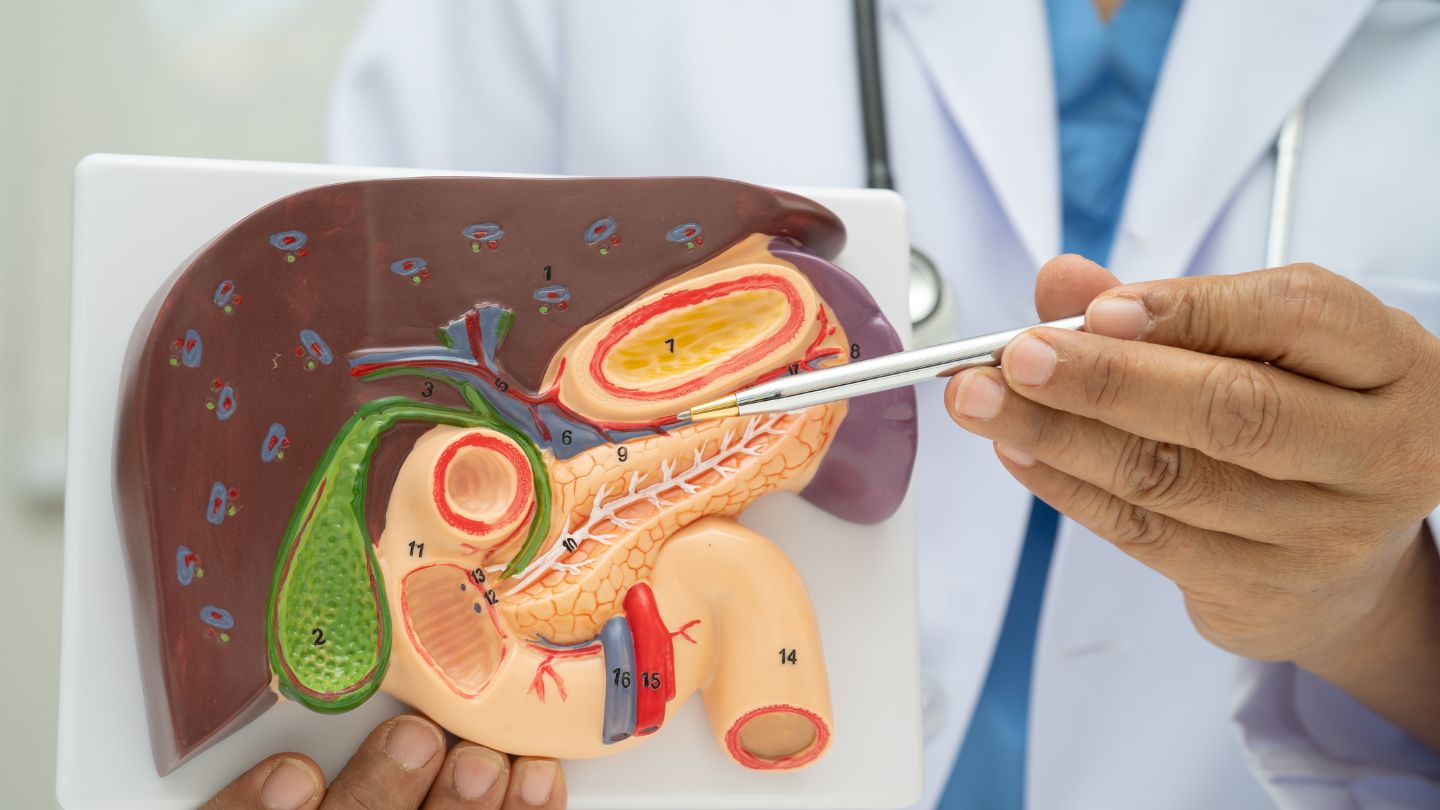
What to Expect During Gallbladder Removal Surgery: A Comprehensive Guide
Curious about what to expect during gallbladder removal surgery? This guide will take you through the entire process, from preparation and the different surgical methods to recovery, providing a clear picture of each step.
Key Takeaways
- Gallbladder removal surgery, or cholecystectomy, can be performed via laparoscopic or open techniques, with laparoscopic being less invasive and associated with faster recovery.
- Common indications for gallbladder removal include gallstones, chronic inflammation, and severe abdominal pain, prompting consultation with healthcare providers.
- Preparation for surgery involves specific preoperative instructions, including fasting and arranging post-surgery transportation, which are critical for a safe procedure and effective recovery.
Understanding Gallbladder Removal Surgery
Gallbladder removal surgery, also known as cholecystectomy, is a procedure that entails the surgical extraction of the gallbladder—a small organ that stores bile from the liver. While this procedure is commonly performed to address gallstones and inflammation, it is also relevant to individuals who have undergone rapid weight loss, such as after bariatric surgery. In such cases, gallbladder dysfunction can occur due to the body’s metabolic changes post-surgery.
There are two primary surgical methods: laparoscopic and open cholecystectomy. Laparoscopic, also known as keyhole surgery, uses several small incisions and is less invasive. Open surgery involves a larger incision and is usually reserved for more complex cases or when complications are present.
Choosing the right surgical method depends on the individual’s condition, overall health, and the presence of any post-bariatric anatomical or digestive changes. Professional evaluation and imaging studies help guide this decision, ensuring safe and effective treatment.
Laparoscopic Cholecystectomy
A laparoscopic cholecystectomy is a surgical procedure performed through multiple small incisions to extract the gallbladder. It involves inserting surgical instruments along with a laparoscope—a slender video camera—into these openings, enabling surgeons to watch their actions on display and conduct the surgery effectively. Compared to traditional open surgery, this technique is favored for several reasons: it results in less blood loss, smaller scars, and accelerates recovery time.
In order to create more room within the abdomen, thus improving visibility and access during the operation, carbon dioxide gas inflates the abdominal cavity. The duration of this minimally invasive procedure spans 1-2 hours, after which most individuals are discharged and allowed to return home that very day. They’re often able to resume their usual activities shortly thereafter—usually within one or two weeks.
Despite the minimal risks, such as potential harm to nearby organs or bile duct injury, associated with this method, its numerous advantages make it an appealing option over conventional approaches.
Open Cholecystectomy
In an open cholecystectomy, a single cut around 6 inches in length is made, usually angled below the ribs on the right side or located at the top section of the abdomen. This traditional technique is utilized when laparoscopic surgery isn’t suitable due to severe inflammation, significant scar tissue presence, or complex issues with the gallbladder.
The operation itself spans between one and two hours. Once the gallbladder has been excised, it’s common for drains to be inserted through this incision to facilitate fluid or pus removal post-surgery.
While patients typically experience a more prolonged recovery following an open cholecystectomy compared to laparoscopic methods, it remains an essential alternative for individuals whose conditions necessitate such comprehensive surgical measures for safe gallbladder extraction.
Why You Might Need Gallbladder Removal

Often undertaken to address issues caused by gallstones and the complications that ensue, gallbladder removal surgery serves as a solution for solid particle formations within the gallbladder that obstruct bile flow. This obstruction can result in discomfort and may lead to infections or other serious health problems. Persistent inflammation of the gallbladder or infrequent instances of cancer in this organ are also grounds for its extraction.
Despite being diminutive in size and situated beneath the liver, the gallbladder fulfills a critical function during digestion through its role in storing bile necessary for breaking down fats. The procedure to remove it is justified when retaining it proves more detrimental than beneficial—this reality makes such surgeries widespread because eliminating an offending gallbladder typically supersedes enduring recurrent pain or potentially life-threatening conditions associated with leaving it untreated.
Symptoms Indicating Surgery
Persistent upper abdominal pain, chills, and vomiting are common indicators of gallbladder problems. This pain often occurs in the upper right abdomen and may radiate to the back or shoulder blade. These symptoms could suggest gallstones obstructing bile ducts or ongoing gallbladder inflammation.
For bariatric patients, gallstone formation is a known risk due to rapid weight loss. If left untreated, these stones can lead to complications like pancreatitis or infection. That’s why it’s essential to consult with your medical team if you’ve had bariatric surgery and are experiencing any of these symptoms. Diagnostic tools such as ultrasound or HIDA scans can confirm the need for surgical removal.
Preparing for Your Surgery

Proper preparation for gallbladder removal surgery ensures a safer procedure and a smoother recovery—especially for patients with a history of bariatric procedures. Fasting after midnight, discussing current medications, and arranging transportation are all essential steps. Surgical candidates should also share any previous weight loss surgery details with their surgeon, as anatomical changes may impact how the procedure is performed.
Medical professionals use this information to tailor preoperative plans, such as adjusting anesthesia protocols or positioning techniques. Instead of trying to prepare on your own, rely on your surgical team’s specific instructions to reduce complications and ensure optimal outcomes.
Preoperative Instructions
Following your surgeon’s preoperative instructions precisely is critical to minimizing surgical risk. You’ll typically need to fast after midnight before your procedure, and only a small sip of water is allowed for medication intake several hours before surgery. This is especially important for patients who’ve undergone bariatric surgery, as your medication absorption and digestive patterns may differ.
Over-the-counter medications like NSAIDs or aspirin must be discontinued in advance, often 5–7 days prior. Your healthcare provider will give you a customized medication list. Additionally, instead of attempting any DIY skin cleansing at home, follow their recommendations for antiseptic cleansers like CHG to prevent infection. Let the clinical team handle all final preparation steps to ensure the area is sterile and safe for surgery.
Arranging Transportation and Care
Postoperative support plays a vital role in successful recovery. Since driving after surgery is not permitted, you must arrange for a friend or family member to escort you home. Patients—especially those with recent bariatric procedures—are encouraged to have someone stay with them during the first 24 hours to monitor for unexpected reactions or side effects.
Unlike self-care routines, clinical staff or caregivers trained to assist with post-op patients can better identify complications and help you follow post-surgery instructions. They can assist with mobility, nutrition, and managing any temporary dietary adjustments if digestive changes occur after gallbladder removal.
The Day of Surgery
Your surgical day begins with check-in, followed by preoperative assessments. Once you’ve changed into a gown, IV access is established to administer fluids, medications, and anesthesia. Compression boots will be applied to minimize the risk of blood clots.
You’ll meet with your anesthesiologist to discuss any customized needs based on your health history, including previous bariatric procedures, which may alter medication metabolism. In the operating room, anesthesia will be administered, and your surgical team will proceed with either laparoscopic or open removal, depending on your case.
Sterile protocols, advanced imaging, and intraoperative monitoring ensure safety throughout the process—underscoring why it’s critical to trust experienced surgical teams rather than attempt to manage care without professional oversight.
Arrival and Check-In
Upon arriving at the hospital, check-in at the PSC desk in the waiting room. Staff will ask for your name and birth date to confirm your identity and prevent mix-ups.
After check-in, you’ll be directed to change into a hospital gown, robe, and non-skid socks. An IV line will be placed in your arm to administer necessary fluids and medications.
Before the operating room, you’ll meet with an anesthesiologist to discuss the anesthesia process.
In the Operating Room
Inside the operating room, you’ll be placed under general anesthesia via an IV line by the anesthesiologist to ensure that you remain asleep throughout the surgery. A tube will also be put in place to help with your respiration as the operation takes place. The team of surgeons will sterilize the area where they’ll make incisions using a germicidal solution.
The surgeon will proceed with either laparoscopic or traditional open surgery methods to extract your gallbladder, taking great care not to harm any organs in close proximity. Although there is a small risk associated with this procedure, it’s typically considered safe and successful at resolving issues related to the gallbladder.
Post-Surgery Recovery
The recuperation period following a gallbladder removal can differ based on whether it was performed through laparoscopic surgery or an open cholecystectomy. Those who undergo the minimally invasive laparoscopic procedure often recover faster, sometimes returning home on the same day of their operation. Those who have an open cholecystectomy require a hospital stay lasting between two to three days. To promote seamless healing after either surgical approach, one must heed the advice and precautions provided by their healthcare provider.
After being discharged from surgery, patients need to focus on pain management, remain vigilant for any signs of infection, and slowly reintegrate into their regular daily activities. Although significant digestive issues are uncommon post-gallbladder removal, some individuals might experience temporary loose bowel movements, which usually subside over time with proper care. Ensuring a secure recovery encompasses both immediate follow-up care post-operation as well as attentive practices during convalescence at home.
Immediate Post-Surgery Care
Recovery in the hospital includes monitoring vital signs and managing pain, often through IV medications or PCA (patient-controlled analgesia). For laparoscopic patients, discharge may occur the same day, whereas open surgery requires a longer stay.
Instead of relying on generalized discharge plans, Wellstar-affiliated teams use detailed protocols tailored to your individual case—including dietary guidance and ambulation targets based on your pre-surgery health. These personalized checklists ensure you meet all safety benchmarks before returning home.
At-Home Recovery

Once discharged, recovery at home focuses on incision care, gradual return to daily activities, and digestive adaptation. For patients recovering from both bariatric and gallbladder procedures, close coordination with your medical team is essential.
Bandage care should be done as your provider has advised. Instead of using over-the-counter products or guessing about healing, follow medical instructions on when and how to change dressings. Do not apply any products to the incision area unless specifically approved.
Resume activity cautiously—light walking is encouraged, but lifting or strenuous movement should be avoided for several weeks. Driving should only resume when you’re off pain medication, and your reflexes are fully functional, typically after 2–3 weeks.
Nutrition guidance will also be individualized, especially for patients who have had bariatric surgery. Hydration, gradual reintroduction of solid foods, and monitoring of digestive responses are essential steps that should be managed under the direction of your care team.
Potential Risks and Complications
Gallbladder removal surgery is generally safe but carries a small risk of complications, like any surgical procedure. The risks depend on the patient’s overall health and the specific reasons for surgery. Common complications include bleeding, infection, and bile duct injury. Infection can occur at the incision site or internally, potentially requiring antibiotics.
Deep vein thrombosis (DVT) is another potential risk, especially in patients with pre-existing conditions. Discuss these risks with your healthcare provider before surgery to ensure you’re fully informed. Understanding these risks allows you to take necessary precautions and follow all postoperative care instructions to minimize complications.
Common Risks
As with any surgery, gallbladder removal comes with risks, including bleeding, infection, or bile duct injury. These risks can increase for individuals with prior abdominal surgeries, including bariatric procedures.
To mitigate these risks, your healthcare provider will evaluate your medical history, imaging, and lab work thoroughly. Surgical planning includes steps like advanced imaging and expert surgical techniques to minimize complications. Never attempt to self-diagnose or rely on Internet remedies—early intervention and professional management are the safest paths forward.
Managing Complications
Post-surgical complications must be addressed swiftly to avoid long-term issues. Maintain ongoing communication with your surgical team, follow up on every scheduled appointment, and report signs like fever, unusual pain, or drainage from the incision immediately.
If you’ve previously had bariatric surgery, your care team may take extra steps to ensure your digestion stabilizes after gallbladder removal. Always rely on your surgeon, nutritionist, or primary care provider—not DIY forums or anecdotal advice—for medical decisions and recovery strategies.
Summary
Gallbladder removal surgery, whether performed laparoscopically or through an open approach, is a routine and typically safe procedure, particularly for patients who undergo rapid weight loss post-bariatric surgery. Understanding the symptoms, preparation steps, and recovery guidelines is essential to achieving a successful outcome.
At Wellstar Comprehensive Bariatric Services, we are dedicated to addressing gallbladder concerns as a part of your comprehensive metabolic health journey. We specialize in gallbladder removal in Cobb County and serve patients from Smryna, Marietta, Austell, LaGrange, and West GA, offering coordinated and compassionate care from diagnosis through recovery. If you’re experiencing abdominal discomfort following weight loss or bariatric surgery, contact us for expert guidance and personalized attention. Reach out to us today!
Frequently Asked Questions
1. Can gallbladder problems occur after weight loss surgery?
Yes, rapid weight loss can increase the risk of gallstones, which may lead to gallbladder issues requiring removal.
2. Will my digestion change permanently after gallbladder removal?
Most people adjust well over time, though some may experience temporary changes like loose stools or difficulty digesting fatty foods.
3. How soon can I return to a normal routine after surgery?
Recovery time varies, but most people can return to light activities within a week. Always follow your provider’s recommendations based on your procedure type.
